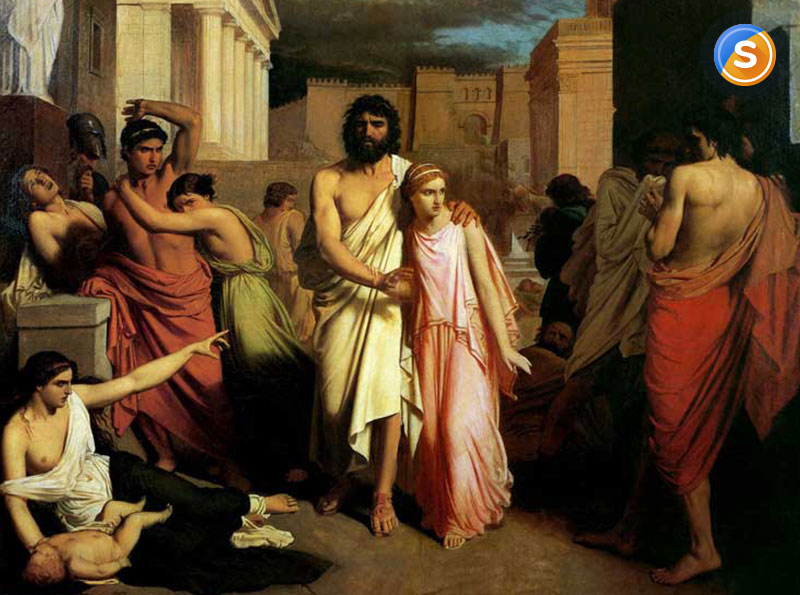
One of the most prominent literature pieces based on Greek mythology is the tragedy “Antigone” written by Sophocles. When discussing the characters of this play, the main attention should be focused on the protagonist and antagonist of the “Antigone”.
When it comes to defining the protagonist of the “Antigone”, there is every likelihood to suggest that it is Antigone. As for me, Antigone is an exceedingly debatable character and there is a lot yet to discuss. Beyond any question, Creon has much more appearances in the play, which may lull us into thinking that he is the protagonist. But other from that, the fact that he is the one who is linked with the concepts of anagnorisis and peripeteia created by Aristotle makes him even more likely to be called a protagonist since these concepts are an indispensable part of his tragic fate.
That raises a logical question: What is peripeteia? Otherwise known as a reverse change of circumstances, peripeteia is an integral part of Creon’s lifelines. When we take a look at the tragedy, we will see a myriad of tragic events portrayed by the author and his path from the endowment of pride to the puddle of humility. Being morally defeated at the end of the play, Creon finds anagnorisis – The King of Thebes is deeply remorseful of his pride. At the same time, we can observe another character – Antigone, who knows her destiny from the outset. For this reason, she is not haunted by any regrets concerning her life.
Undoubtedly, there is every indication to suggest that Creon is the protagonist in the “Antigone” but the same is true about Antigone, as well. Creon’s niece is fundamental in keeping the action of the tragedy. Antigone sets the play in motion. Heedless of Creon's will, Antigone is the one who buries Polyneices. To cap it all, her suicide impelled her beloved one, Haemon, to commit a self-murder. Inevitably, it triggers the death of Creon’s wife. From this, it is patently evident that we are more likely to feel sorry for Antigone till the last page of the story, but not for Creon. As it was said before, there is always room for animated discussions about the protagonist of the play, but one thing remains clear: Antigone rekindles the storm.
The Antagonist: Creon
Whereas Antigone is the protagonist of the play, Creon most likely performs the role of the antagonist. In the play, he is the symbol of force, which stands in opposition with Antigone. Once again, there are a lot of facts that suggest that Creon is the protagonist in the play. We can provide multiple pieces of evidence that testify to this fact but the most conclusive one is that the King of Thebes encompasses two indispensable elements of Sophocles's plays – anagnorisis and peripeteia.
It is also worth remembering that it is Antigone who shakes the whole nation by defying the law set by the King. She moves the action while Creon's main task is to display his reaction. Creon is going to great length to bring his niece’s forward motion to a halt, but he did not attempt to create his own. That is in a way what makes us write him off to the antagonist shelf. But as it was said above, there is always a room for discussions.
